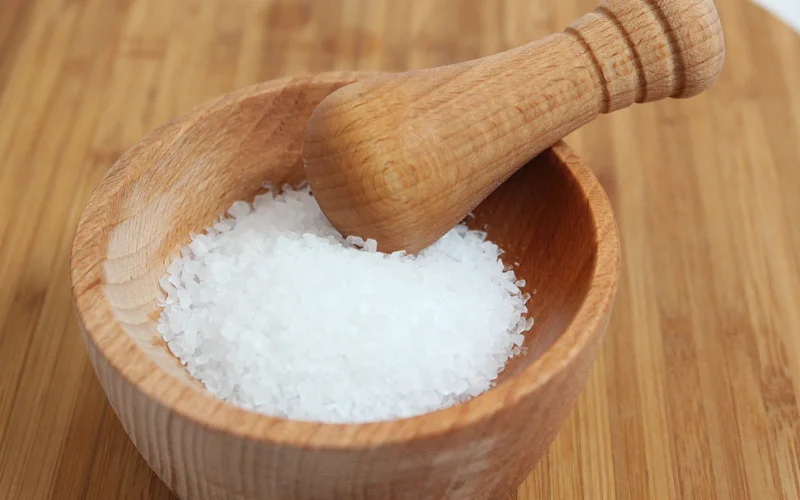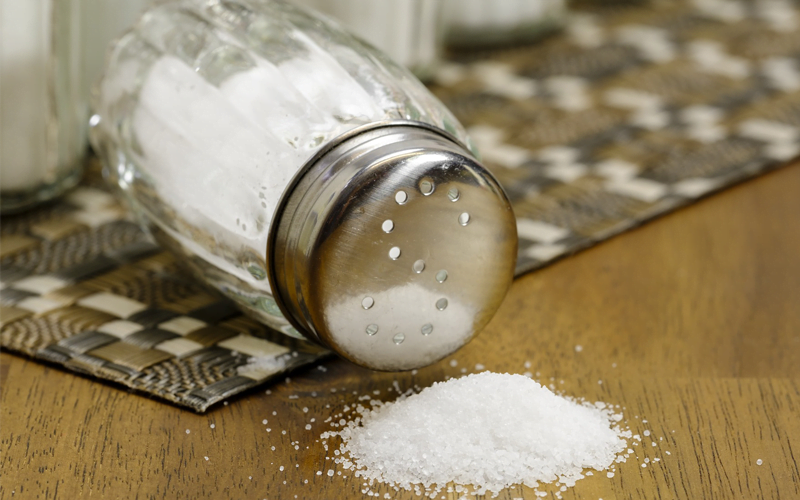
11 Jan Salt – Love Like It!
Salt, an integral part of all cuisine is an unavoidable flavour/spice while cooking food. Woven across all the narratives in the world history, I will just mention this old story here (some say its part of some Indian folklore, other’s say its an English fable.) I will not get into any debate as to its origin, but would like to narrate it mainly because it portrays the significance of this mineral to the best.
The Story
Once upon a time, there was a King with three beautiful daughters. The youngest princess was as kind and thoughtful as she was pretty. The King wanted to know how much his daughters loved him, so he called them to him one by one and asked them ‘how much do you love me?’. The eldest princess said ‘oh papa! I love you as much as the diamonds’ and the second one said’ I love you as much as gold and precious stones’. The king was very happy, and he waited for the answer from his youngest daughter.
The younger princess thought for some time and finally answered “I love you as much as the salt”.
The king got angry at the answer that he threw his daughter out of the kingdom. Years went by, and the King during one of his travels visited a neighbouring kingdom. He didn’t know that his youngest daughter is now married to the prince there. The princess on hearing that her father was in town informed her husband the whole story and the prince then invited the king for lunch.
The spread on the table looked scrumptious, and the king was hungry. He sat down to eat but found he couldn’t eat even a morsel as the food was utterly tasteless. It did not have any salt in it. The king then realized the importance of salt and repented his deeds against his younger daughter. The princess seeing all this came out and was soon reunited with her family.
Nutrition Facts
It is known by its chemical formula NaCl. You can also use it to season your food and to preserve it as well.
100gm salt consist of 8mg potassium, 38,758mg sodium, calcium 2% and Iron 1%.
Story of Salt-History
Earlier evidences of processing this mineral dates back to 6000B.C. There was some mention of people residing in the current Romania boiling water from springs, so as to extract this mineral from the spring in those days. Even if it is easily available everywhere now, there was a time when that was not so.
The Jews, Greeks, ancient Romanians and the Indians all valued it for its importance. If you go back to the Roman Empire or the Middle Ages, this mineral was a precious commodity. It was transported across the salt road to the Germanic tribes. A caravan of 40,000 Camel Trains travelled across 400 miles of the Sahara carrying salt to trade at the inland markets in the Sahel, sometimes for slaves: Timbuktu was a huge salt and slave market.
Now, when you mention the history of salt in India, you cannot forget the Dandi March also know as the uppu satyagraha. This march, was an act of non violent protest led by our own father of the Nation, Gandhiji to continue the production of salt from seawater in the coastal village of Dandi (it is a part of Gujurat, now). This was a practice by the locals until the British levied tax on salt production, regarding their sea-salt extraction process as illegal, and also constantly using force to stop it.
Benefits and Uses

Now, let us get to the benefits and uses of this mineral. You normally add it your food to enhance its taste. The base for salt is sodium chloride. This mineral is easily found in abundance in the vast seawater. Consisting of 40% sodium and 60% chloride, this is an essential mineral.
It acts as a vital electrolyte for your body and helps with fluid balance, nerve transmission and muscle function. It also helps to improve your sleep.
Surprising Practical uses
There are certain other uses, which you would not normally relate to it and it can act as a good balm to soothe a bee sting. Other uses include de-icing the highways for countries with snowfall, for agricultural purpose, water conditioning and so on.
Dipping cut fruits like pears or apples in salted water will help it to look fresh for a longer period. It is also a good medicine for gum infection.
Whatever its benefits or uses, if you have high blood pressure it is better to cut back on your salt intake.
Types of Salt
It is available in various kinds such as the Himalayan pink salt, black, kosher or table, sea and iodised salt. Pink salt found in the Himalayas is more beneficial than the regular one. Kosher salt, meanwhile, is a crystal of big size and free of iodine. Also, known as Kala Namak, the black salt is a natural rock salt. Ayurvedic medicines often use it. Final mention goes to sea salt produced by evaporating the sea water or water from the saltwater lake.
However, one thing to consider is that whatever the type, you should not include too much of it in your diet, because over consumption of sodium is not good for your health.
How much is too much?
Studies claim that the recommended level of it’s intake for a person is about 2,300 milligrams per day. Also, from the information below you can get to know the volume of sodium found in specified quantities. Have a look at the measurements here:
¼ tsp salt= 575mg sodium
½ tsp salt=1,150mg sodium
1 tsp salt=2,300mg sodium
Now, you have realized the importance of Salt. However, you also need to understand that you should not take too much of it. Take it only in the moderation that you require. You can’t live without it but don’t ever overdo it.


K V Nair
Posted at 19:27h, 25 JanuaryValuable, detailed study
cookingrevived
Posted at 12:47h, 28 JanuaryThank you …